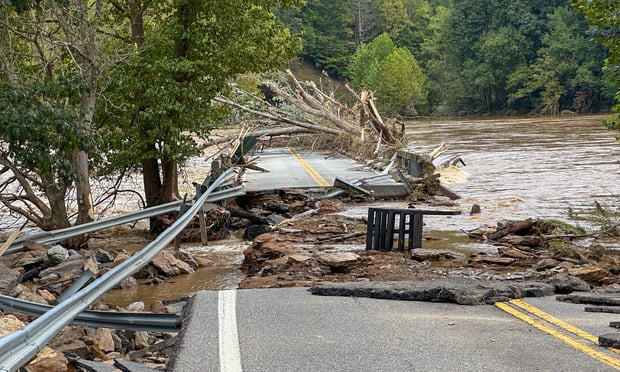For half a century, the Insurance Institute for Highway Safety has been in the vanguard on highway and auto safety, committed to the goal of reducing losses–deaths, injuries, property and vehicle damage–on the nation's roads.
 IIHS has been successful beyond the wildest imagination of its remarkably foresighted founders. Without exaggeration, over the past 50 years, hundreds of thousands of lives have been saved and millions of injuries avoided–or their severity lessened, in whole or in part–because of the fine work of this institution. Here are some examples:
IIHS has been successful beyond the wildest imagination of its remarkably foresighted founders. Without exaggeration, over the past 50 years, hundreds of thousands of lives have been saved and millions of injuries avoided–or their severity lessened, in whole or in part–because of the fine work of this institution. Here are some examples:
When IIHS was established 50 years ago, about 36,000 people died annually on America's roads. Amazingly, fewer people–34,017 to be exact–were killed last year, in 2008. While the toll is still too high, consider for a moment how extraordinary this achievement is.
Back in 1960, when IIHS was just getting its start, there were 87 million licensed drivers in the United States who owned 61 million vehicles and drove them for a then record 303 billion miles. Compare that to 2008, when 205 million licensed drivers drove 256 million vehicles some 2.9 trillion miles.
In other words, there were 6 percent fewer highway deaths in 2008 than in 1960 despite the fact that last year there were nearly three-times as many licensed drivers, four-times as many cars and 10-times as many miles driven than in 1960.
According to a 2002 study by the National Highway Transportation Safety Administration, and extrapolating the results through 2008, the cumulative number of lives saved since 1960 through improvements in motor vehicle safety technology is now approaching 500,000.
Saving half-a-million lives in 50 years is not only remarkable, but by any standard it qualifies as one of the greatest public health achievements of all time. Whereas five people were killed per-100-million vehicle miles traveled in 1960, that number had plunged by nearly 75 percent to 1.36 fatalities per-100-million vehicle miles traveled in 2008.

Put differently and in the terms where the rubber literally meets the road, it's four-times safer to be on America's highways today than it was a half-century ago, despite a quadrupling in the number of vehicles on the road and a tenfold increase in miles driven.
That's just the beginning of what IIHS has accomplished, and it's just the beginning of what this industry has accomplished in the name of public safety. In so many areas, the insurance industry has enhanced quality of life for countless people and their communities.
Centuries ago, for example, the insurance industry funded local fire brigades. For a premium, we'd put out the fire in your house. (The penalty for nonpayment of premium was rather harsh back then).
And although as a society we have found new ways to fund fire departments, that tradition of protecting property against damage and destruction lives on through the educational efforts of individual insurers and the support of organizations like the industry's very own Institute for Business and Home Safety.
For decades, the mission of the IBHS has been to reduce the social and economic effects of natural disasters and other property losses through research, support of sound construction technologies and mitigation.
Today, under the leadership of Julie Rochman, president and chief executive officer of IBHA–who is an alum of both IIHS and the Insurance Information Institute–IBHA is poised to take that mission and the benefits it brings to society and this industry to the next level.
As most of you are aware, the IBHS is in the midst of building a new facility–the Insurance Center for Building Safety Research. The center, wholly industry owned and operated, is under construction in Chester County, S.C. When complete, the $40 million effort will be the only multiperil research and testing facility in the country, if not the world.
Its focus will be on the perils of wind, fire, water intrusion and hail. I fully expect that the industry will earn back its initial investment in the facility many, many times over–just as it has with IIHS.
I would be remiss if I did not also mention the important, indeed indispensible role played by insurers in the area of occupational safety and health. This commitment to reducing injuries and deaths in the workplace is now nearly a century old, dating to the advent of the first modern workers' compensation systems in the early 20th century.
Today, workers' comp insurers are a primary source of loss control expertise for millions of American businesses–with tangible results. Consider that in 1926, an employee working in a manufacturing setting had a 25 percent chance of being injured on the job. In other words, one-in-four workers suffered injuries each year. In 2008, the odds were only about 5 percent, or just one-in-20.
Insurers can proudly claim to have played a prominent and instrumental role in making the workplace safer and employers more productive.
And whether we're talking about workers' comp, homeowners or auto insurance, let's not forget the salutary effects of risk- and loss-sensitive pricing.
The fact that the price of insurance reflects the actual and expected costs to be incurred provides employers, homeowners and drivers–buyers of all types of insurance–with incentives to act in ways that lead to the reduction or avoidance of loss. Thus, the incentives provided by the insurance system provide benefits for society at large.
Yet the message about the industry's good deeds is one which we often struggle to have heard. But that's not really the case with the IIHS.
Virtually every car-owning American has seen the Institute's crash tests. The videos are dramatic. They can be seen on television news shows, read about in newspapers and magazines, and are even shown in the auto manufacturers' own advertisements.
I can think of no other product where the manufacturer is willing to pay to show its own product being destroyed in slow motion on primetime television–and by the insurance industry, no less.
But it doesn't stop there. For most of its first 50 years, IIHS got its message out primarily through television and the print media. What about the new media? Does IIHS's message and mission resonate in the age of the Internet? Well, to state it plainly, IIHS is everywhere in cyberspace. Consider that:
o There are 6.1 million references to the Institute on the Web, based on a Google search.
o Nearly 52,000 other Web sites link to IIHS.org, driving millions of unique users to the site every year.
o There were 1,640 IIHS crash-test videos on YouTube, and what's at least as interesting as the videos themselves are the uncensored comments viewers add to each one of them. Let's just say people do not hesitate to let you really know what they think about these vehicles.
The Institute is clearly known best for its crash tests, the resulting vehicle safety ratings and its annual list of Top Safety Pick Winners. The Institute can justly be proud that its ratings truly make a difference and empower consumers.
Indeed, a driver of a vehicle with the Institute's “Good” rating is 50 percent less likely to be killed in the same crash than in a car with a “Poor” rating. That is truly a distinction with a difference.
But I think many–even many in the insurance industry–overlook that “highway safety” is a much broader calling than just crashing cars. IIHS has certainly not forgotten that, and its broad research agenda over the span of decades has contributed to some of the most significant innovations in motor vehicle safety technology and highway safety.
For example, today we take seat belt use for granted, but it wasn't always that way. IIHS was at the vanguard many years ago when it came to pushing for mandatory use of seat belts. IIHS also lobbied for side-impact airbags and wider use of child restraints, both of which have resulted in innumerable lives saved.
So what about the next 50 years?
IIHS has kept up with the dizzying pace of change in the auto market over the past half-century. I have every confidence that it will continue to do so over the next 50 years.
One thing for certain is that the vehicles on the roads in 2059 will be very different from today. Changes in the U.S. economy, demographic shifts, the political environment, fuel economy standards, higher energy prices and climate change legislation will influence what types of cars are sold and how many, who sells them, and ultimately how they are designed.
Many new auto makers–some of whom perhaps do not understand the importance Americans place on safety–will seek to enter the U.S. market. Even today, China and India are banging on the doors.
Meanwhile, BlackBerries, cell phones, iPods and a myriad of other devices are contributing to an epidemic in accidents attributable to distracted driving.
In addition, the Baby Boomer generation is reaching an age where their eyesight and reflexes will make them progressively more likely to be involved in accidents. And the Green Revolution is ushering in an era of alternative-fuel vehicles and micro-cars with unknown impacts on safety.
Can technology alone overcome these problems? What is the role of education? What roles should be played by regulation and legislation? Will we be forced to make tradeoffs between safety on the one hand and environmental considerations on the other?
The next 50 years will bring its share of challenges when it comes to auto and highway safety–and our large economy and complex society will defy simply solutions.
But amid such uncertainty we can be certain of one thing–that IIHS will be there, playing a leadership role in devising solutions that benefit not only the insurance industry, but our customers, our economy and population as a whole.
We're fortunate to work in an industry where we can all wake up every day and feel good about what we do. We can and should be proud of insurance organizations such as IIHS–a crown jewel of the industry.
So, in this, the 50th anniversary year of the Insurance Institute for Highway Safety, let's use the momentum, the memories and the lessons of the past half-century to guide us through the next 50 years.
Robert P. Hartwig, Ph.D., CPCU, is president of the Insurance Information Institute in New York. He delivered a version of this article as a recent speech at the IIHS Vehicle Research Center in Ruckersville, Va. He may be reached at [email protected].
Want to continue reading?
Become a Free PropertyCasualty360 Digital Reader
Your access to unlimited PropertyCasualty360 content isn’t changing.
Once you are an ALM digital member, you’ll receive:
- Breaking insurance news and analysis, on-site and via our newsletters and custom alerts
- Weekly Insurance Speak podcast featuring exclusive interviews with industry leaders
- Educational webcasts, white papers, and ebooks from industry thought leaders
- Critical converage of the employee benefits and financial advisory markets on our other ALM sites, BenefitsPRO and ThinkAdvisor
Already have an account? Sign In Now
© 2024 ALM Global, LLC, All Rights Reserved. Request academic re-use from www.copyright.com. All other uses, submit a request to [email protected]. For more information visit Asset & Logo Licensing.








